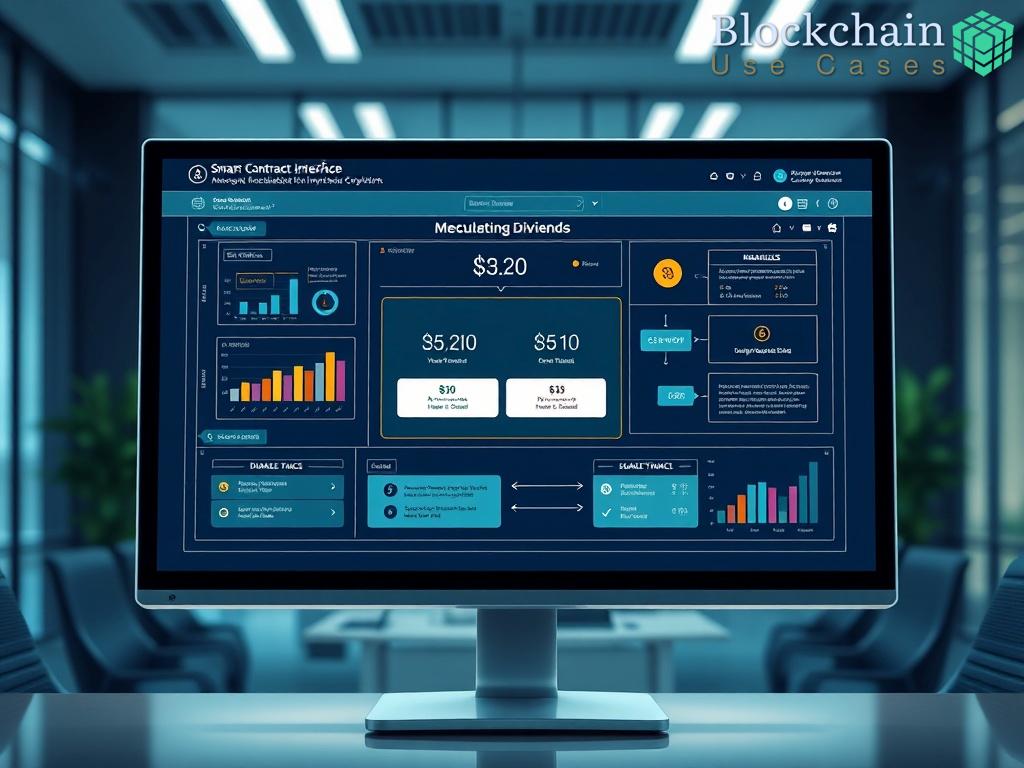Enhancing Transparency in Insurance Underwriting
Revolutionizing Underwriting Practices
The insurance industry has long grappled with the complexities of underwriting, a process that often lacks transparency and can lead to inefficiencies and mistrust among stakeholders. The advent of blockchain technology heralds a new era, offering a decentralized solution that not only enhances the security of data but also promotes transparency in the underwriting process. By leveraging blockchain, insurance companies can ensure that all parties have access to the same information, thus fostering trust and accountability.
How Blockchain Facilitates Transparency
At the core of blockchain’s appeal is its ability to create immutable records that can be accessed by all authorized participants. This characteristic is particularly beneficial in underwriting, where clear visibility into guidelines and decision-making processes is crucial. Through a shared ledger, all underwriting guidelines can be documented and verified in real-time, reducing the likelihood of discrepancies and fostering a culture of openness.
| Feature | Traditional Underwriting | Blockchain-Enabled Underwriting |
|---|---|---|
| Data Access | Limited to individual entities | Shared among all stakeholders |
| Record Integrity | Prone to human error | Immutable and secure |
| Efficiency | Time-consuming | Real-time updates |
Benefits Beyond Transparency
While the primary focus is on transparency, the implications of blockchain technology extend beyond mere visibility. By streamlining the underwriting process, insurance companies can reduce operational costs and enhance customer satisfaction. Additionally, the incorporation of smart contracts can automate various aspects of underwriting, further minimizing delays and errors. This innovation not only improves the efficiency of the insurance process but also empowers clients with greater control and awareness of their policies.
Automating Compliance through Smart Contracts

The integration of smart contracts into insurance underwriting represents a significant advancement in automating compliance and ensuring adherence to established guidelines. By utilizing blockchain technology, insurers can create self-executing contracts that automatically enforce compliance rules without the need for extensive manual oversight. This innovation not only enhances efficiency but also mitigates risks associated with human error, thereby streamlining the entire underwriting process.
How Smart Contracts Transform Compliance
Smart contracts operate on a series of pre-defined conditions that, once met, trigger automatic actions such as approval or denial of coverage. This feature is particularly advantageous for insurers, as it facilitates real-time compliance checks against underwriting guidelines. The benefits of this automation can be summarized through the following points:
- Accuracy: Minimizing human errors through automated processes ensures that compliance is consistent and reliable.
- Speed: Instantaneous execution of contracts reduces the time required for underwriting decisions, enabling quicker policy issuance.
- Cost-Effectiveness: Reducing the need for manual oversight lowers operational costs, leading to more competitive pricing for consumers.
Ensuring Regulatory Adherence
Another pivotal aspect of automating compliance through smart contracts is the capability to seamlessly adapt to regulatory changes. Insurers can program smart contracts to incorporate updates from regulatory bodies, ensuring that underwriting practices remain aligned with current laws and standards. This adaptability not only protects insurers from potential penalties but also reinforces consumer confidence in the integrity of the underwriting process.
Empowering Stakeholders with Transparency
The implementation of smart contracts also enhances transparency among all stakeholders involved in the insurance process. With the ability to verify compliance in real-time, clients can be assured that their policies are being managed in accordance with established guidelines. This level of transparency fosters trust and strengthens the relationship between insurers and their clients, ultimately leading to higher customer satisfaction and retention rates.
Decentralized Data Management for Risk Assessment
Revolutionizing Risk Evaluation through Decentralization
The traditional methods of risk assessment in insurance underwriting often rely on centralized data systems, which can be vulnerable to inconsistencies, inaccuracies, and potential breaches. By incorporating decentralized data management through blockchain technology, insurers can fundamentally transform how risks are evaluated and managed. This approach not only enhances the integrity of the data but also empowers insurers with real-time insights that are crucial for informed decision-making.
Elevating Data Integrity and Accuracy
One of the most significant advantages of decentralized data management is the enhancement of data integrity and accuracy. In traditional systems, data silos often lead to discrepancies, hampering effective risk assessment. With blockchain, however, all data is stored in an immutable ledger that is accessible to all authorized parties, allowing for seamless validation and verification of information. This ensures that the risk assessment process is based on the most reliable and up-to-date information available.
Benefits of Decentralized Data Management
Implementing decentralized data management in risk assessment presents numerous advantages for insurers. Here are some key benefits:
- Enhanced Collaboration: All stakeholders can access and contribute to a shared database, fostering collaboration and improving communication.
- Real-Time Updates: Changes in risk factors or underwriting guidelines can be updated instantly across the network, ensuring that all parties have access to the latest information.
- Improved Risk Analysis: With comprehensive data at their fingertips, insurers can conduct more thorough risk analyses, leading to more accurate pricing and coverage decisions.
- Reduced Fraud: The transparent nature of blockchain helps in identifying fraudulent activities, as all transactions and changes are recorded and can be traced back to their origin.
| Feature | Traditional Approach | Blockchain Approach |
|---|---|---|
| Data Access | Limited to individual entities | Shared among all authorized stakeholders |
| Data Integrity | Prone to errors and manipulation | Immutable and verifiable |
| Update Frequency | Periodic and manual | Real-time and automatic |
| Fraud Detection | Reactive measures | Proactive identification through transparency |
Empowering Insurers through Informed Decision-Making
Decentralized data management not only enhances risk assessment but also empowers insurers to make data-driven decisions. By having access to a comprehensive view of the risk landscape, insurers can tailor their policies to better meet the needs of their clients. Furthermore, this approach fosters a culture of accountability and transparency, essential for building long-lasting relationships with policyholders. As the insurance sector continues to evolve, embracing decentralized data management through blockchain will be pivotal for those looking to stay ahead in a competitive marketplace.
Improving Fraud Detection with Blockchain Technology
The insurance industry has long been a target for fraudulent activities, resulting in significant financial losses and diminished trust among consumers. The introduction of blockchain technology offers a groundbreaking approach to combating fraud within insurance underwriting. By leveraging the immutable and transparent nature of blockchain, insurers can not only detect fraudulent activities more effectively but also create a robust framework that discourages fraud from occurring in the first place.
Unveiling the Mechanisms of Fraud Prevention
Blockchain technology inherently possesses features that can significantly enhance fraud detection mechanisms. Its decentralized ledger system ensures that all transactions are recorded in a manner that is accessible yet secure. This transparency creates a verifiable trail of all underwriting activities, making it increasingly difficult for fraudsters to manipulate data without detection.
Key Advantages of Blockchain in Fraud Detection
Implementing blockchain technology in insurance underwriting introduces various advantages that contribute to improved fraud detection capabilities. The following list outlines these key benefits:
- Immutable Records: Once data is recorded on the blockchain, it cannot be altered or deleted. This property of immutability helps ensure that all underwriting decisions and transactions are permanent, deterring fraudulent activities.
- Real-Time Monitoring: Blockchain allows for continuous monitoring of transactions and claims, enabling insurers to identify anomalies as they occur. This proactive approach aids in the swift identification of potential fraud.
- Enhanced Collaboration: With all stakeholders having access to the same data, collaboration between insurers, reinsurers, and regulatory bodies can enhance the detection of suspicious patterns and behaviors.
- Fraud Analytics: Advanced data analytics can be integrated with blockchain to analyze transaction patterns, enabling insurers to predict and mitigate potential fraudulent activities effectively.
Transforming the Insurance Landscape
The integration of blockchain technology in fraud detection not only enhances security but also reinforces consumer confidence in the insurance process. By providing a transparent and accountable framework, insurers can better protect themselves against fraudulent claims, ultimately leading to lower costs and improved services for policyholders. As the insurance industry continues to embrace technological advancements, blockchain stands out as a pivotal tool in the fight against fraud, ensuring a more secure and trustworthy underwriting environment.
Facilitating Collaboration among Underwriters
The insurance industry is experiencing a transformative shift, largely driven by technological advancements that foster collaboration and enhance operational efficiency. With the integration of blockchain technology into the underwriting process, underwriters can now collaboratively work in an environment characterized by transparency and security. This new paradigm not only allows for seamless information sharing but also cultivates a spirit of teamwork that can lead to improved decision-making and risk assessment.
One of the primary benefits of blockchain in underwriting is its ability to create a shared and immutable ledger accessible to all authorized underwriters. This ensures that every stakeholder is on the same page, significantly reducing the likelihood of miscommunication or discrepancies in data interpretation. As a result, underwriters can more effectively collaborate on complex cases, leveraging their collective expertise to arrive at well-informed decisions.
Transforming Communication Dynamics
In traditional underwriting environments, communication can often be fragmented, with information siloed within different departments or entities. Blockchain eliminates these barriers by providing a unified platform for collaboration. Underwriters can engage in real-time discussions regarding guideline adjustments, policy interpretations, and risk evaluations, all while having access to the same dataset. This comprehensive view enables underwriters to assess risks and policies from multiple angles, leading to enhanced accuracy and efficiency in their assessments.
The decentralized nature of blockchain also means that changes made to underwriting guidelines or policies are instantly visible to all participants. This immediate visibility not only expedites the decision-making process but also fosters a culture of accountability. When underwriters know that their peers can see the rationale behind their decisions, it encourages responsible behavior and adherence to established guidelines.
Building Trust through Transparency
Trust is a cornerstone of successful collaboration, and blockchain technology inherently promotes this principle through its transparent operations. Each action taken within the blockchain is documented in a manner that is both traceable and verifiable. Underwriters can confidently collaborate, knowing that their interactions and decisions are recorded in a secure and immutable manner. This transparency mitigates the risk of disputes and enhances mutual respect among colleagues.
Moreover, the ability to analyze data collectively opens up new avenues for insights and innovation. Underwriters can utilize advanced analytical tools integrated with blockchain to identify trends, assess risk profiles, and predict potential challenges. This collaborative analysis not only enhances individual performance but also contributes to the overall success of the underwriting team, ultimately leading to better service for clients and a stronger competitive edge in the market.





